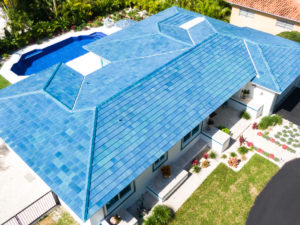Clay vs. Concrete: Which is Best for Your FL Home?
Jul 01, 2022While concrete and clay roofs are very similar, there are a few major differences to be considered before choosing a material.
Florida weather can be especially tough on roofs. Roofing systems can really take a beating from the hurricane winds and the relentless sun. When a homeowner is in the market for a new roofing system for their home it is essential to make a smart roofing choice. Today Istueta Roofing in Miami, FL, compares two roofing options: clay and concrete.

Clay Roof Tiles:
These tiles are created by shaping clay into a tile shape and baking them until they’re hard. The density of the clay tile is controlled by how long it’s heated and the temperature used.
There’s a wide variety of profiles, styles, colors, and finishes. Clay tiles are environmentally friendly, they’re made from an all-natural material, free of synthetic materials, free of toxic chemicals, and at the end of their life, clay tiles can be crushed and re-introduced into tile production, or put to other uses such as baseball fields, or landscaping.

Concrete Roof Tiles:
These roof tiles are produced with standard concrete by mixing cement, aggregate, and water. It is then poured into molds and heated.
While the concrete tiles can remain gray, you can paint them or add color to the mix. Concrete tiles can mimic the look of other kinds of roofing, including wood shake, slate, stone, or clay tiles, by altering the mold design. Manufacturers can also make them in different sizes.
9 Differences
While concrete and clay roofs are very similar, there are a few major differences to be considered before choosing a material.
View this post on Instagram
Water Absorption
One of the biggest differences between concrete and clay roof tiles is how they absorb water. Concrete tiles have a water absorption of about 13%, and clay tiles have a water absorption of about 6%. As a result, concrete tiles may be more prone to mildew growth and stains. Clay tiles have few issues due to their low water absorption rate.
Salt Intrusion
Clay tiles have much lower salt air intrusion than concrete.
Concrete porosity allows salt air to infiltrate and cause premature degradation, including reduced transverse breaking strength.
Weight
There is a substantial difference in the dry weight of concrete vs. clay tile roofs in Miami, FL. Concrete tiles weigh nearly 40 percent more than clay tiles, so you have to make sure your roof structure can bear the weight before installing them.
Color
Clay has better and longer color retention – whether Grade 1, Grade 2, or even some Grade 3 Clay. Concrete has no color warranty from any manufacturer. Clay manufacturers sometimes have a color warranty ranging up to 75 years non-prorated.
Efflorescence
Concrete roof tiles can experience efflorescence. This is a chemical reaction caused by the nature of the cement that appears as a white powdery substance on the surface of the concrete tiles, affecting aesthetically the color of the tile. Clay tiles cannot have any efflorescence.
Durability
Clay Grade 1 and Grade 2 have a longer lifespan than concrete. The oldest roofs in Florida are clay tile. Some are over 100 years old.
Maintenance
Concrete with a much higher moisture absorbency has a significantly increased likelihood of algae staining, and airborne debris (dust and soil), which requires more maintenance on concrete roofing in FL. Since clay tiles do not have those issues, there are not many challenges that come with maintaining a clay tile roof. Although maintenance may also depend on where the property is located if it’s surrounded by many trees may require two or three maintenance per year.
Cost
The cost of concrete and clay tiles may vary depending on the profile, color, and manufacturer.
Top Takeaway!🔥
Moisture Absorbency and Salt Air Intrusion are the primary factors that determine the durability and longevity of a Roof Tile. Here in South Florida – it is moisture absorption and salt air intrusion that degrades roof tiles, causing degradation of color, and eventual product failure. Make sure to consider these factors when buying a new roof.
If you’re undecided about the type of roofing that is best for your home, trust the experts at Istueta Roofing in Miami, FL. Call us today at (305) 671-9190 or schedule a consultation online here.



